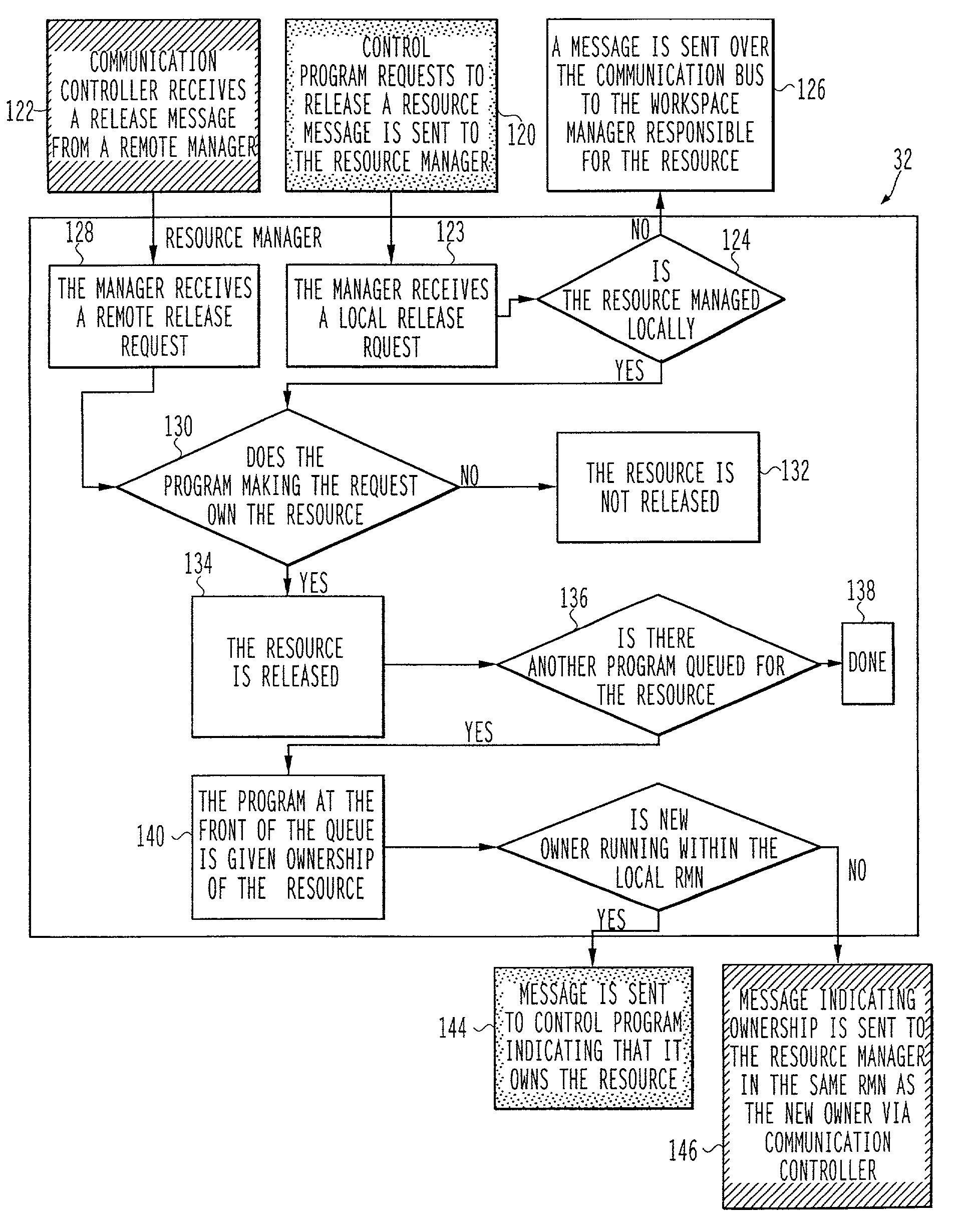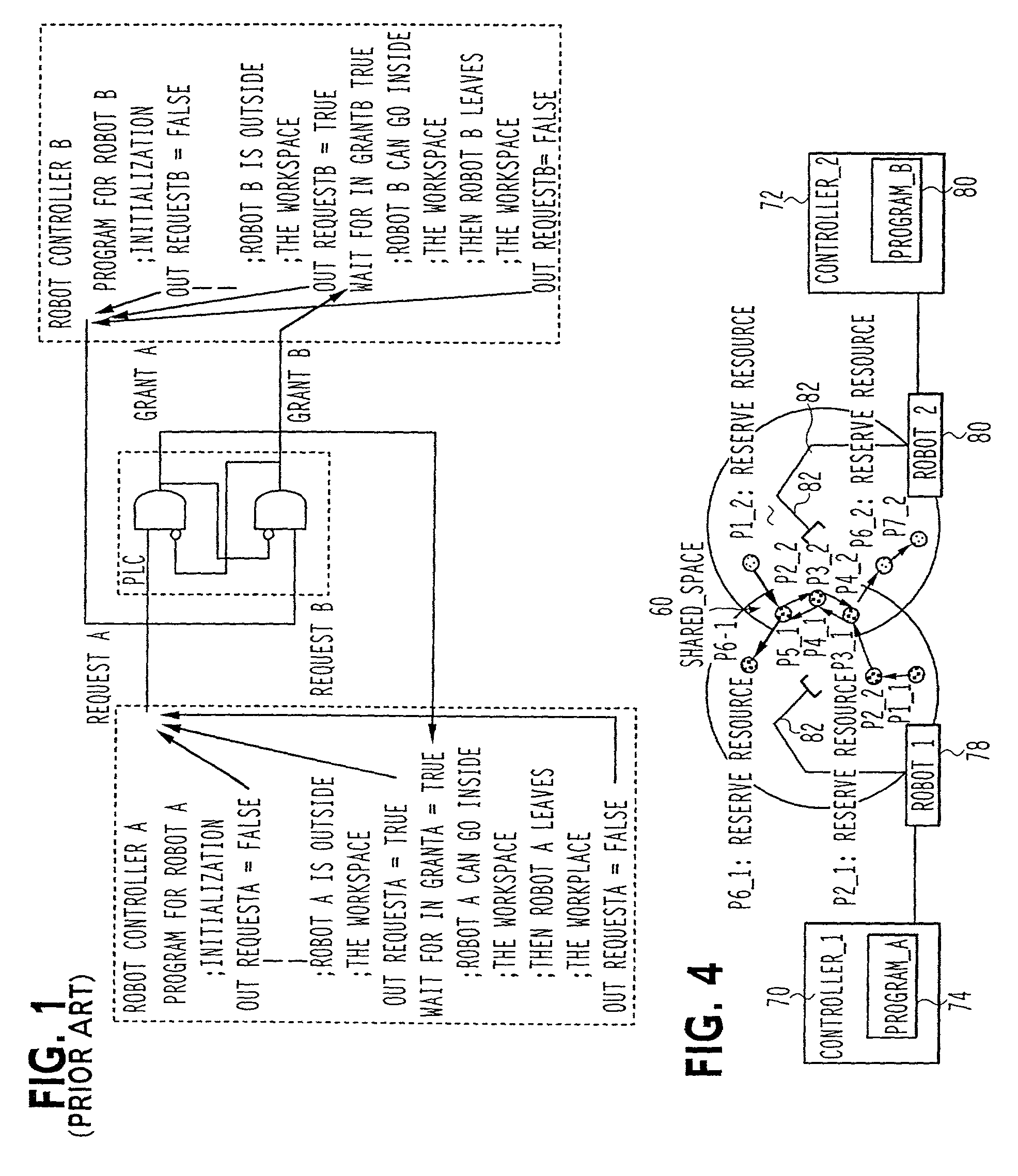System controlling exclusive access by control programs to system resources
a technology of system resources and control programs, applied in the direction of automatic controllers, program control, data conversion, etc., can solve the problems of mutex operations that cannot be controlled by the program, the atomic nature of mutex operations is destroyed, and the request operation and the wait operation are not atomic (indivisible), so as to prevent the deadlock
- Summary
- Abstract
- Description
- Claims
- Application Information
AI Technical Summary
Benefits of technology
Problems solved by technology
Method used
Image
Examples
case 1 (
[0075Use of the resource by both a background program and a control program)—Example of tool removed from tool store for maintenance: In the case where several robots automatically exchange tools with a tool store, the tools may be periodically removed for maintenance. A special automatic background program may reserve a tool resource when a tool is temporarily removed from the tool store for maintenance. This prohibits the control program commanding the robot from attempting to use a tool that is in the middle of maintenance.
case 2 (
[0076automatic reservation of resource based on sensor or automation calculation task)—It may be interesting in some cases to have a control program communicate with a sensor task to reserve a resource when a measurement threshold is crossed (e.g., reserve workspace when distance to geometric region is less than 10 cm). In this case, the control program only triggers the sensor task to start monitoring and make the reservation if / when the threshold is crossed. The workspace resource would be reserved from the sensor task in this case and not from the control program even though the control program started the sensor task.
PUM
 Login to View More
Login to View More Abstract
Description
Claims
Application Information
 Login to View More
Login to View More - R&D
- Intellectual Property
- Life Sciences
- Materials
- Tech Scout
- Unparalleled Data Quality
- Higher Quality Content
- 60% Fewer Hallucinations
Browse by: Latest US Patents, China's latest patents, Technical Efficacy Thesaurus, Application Domain, Technology Topic, Popular Technical Reports.
© 2025 PatSnap. All rights reserved.Legal|Privacy policy|Modern Slavery Act Transparency Statement|Sitemap|About US| Contact US: help@patsnap.com



